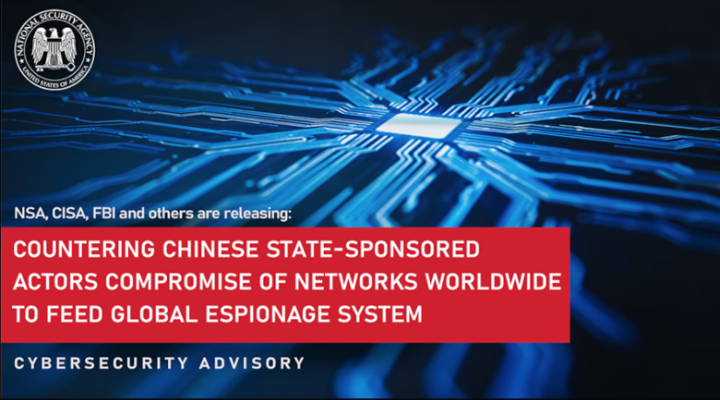There’s a quiet revolution happening in cancer research labs around the world. It’s not about radiation beams, toxic chemotherapy cocktails, or risky surgeries. It’s about something much simpler… and much smarter.
Simply put, it’s about harnessing the body’s own defense system and giving it a powerful upgrade.
The soldiers leading this charge are called natural killer cells—or NK cells for short.
They’re part of your innate immune system, which is basically your body’s first-response SWAT team.
And unlike other immune cells that need to be trained to recognize specific threats, NK cells are born ready to fight.
They patrol your body every day, quietly sniffing out infected or abnormal cells and eliminating them before they become a bigger problem.
They’re the reason you’ve likely fought off infections or stopped tiny clusters of abnormal cells from ever turning into full-blown cancer without even realizing it.
But what if we could make these natural killers even deadlier—to cancer, that is?
How NK Cells Work: A Natural Line of Defense
Your immune system is built like a layered fortress…
At the front gate are the innate defenders like NK cells. They don’t wait for orders. They don’t need weeks to learn an enemy’s signature. They see a suspicious cell, they strike.
NK cells operate with a unique mix of instincts and precision.
They look for signals on the surface of cells—kind of like scanning a badge at the door.
Healthy cells show their ID. Infected or cancerous cells don’t. And when that ID is missing, NK cells make the decision in milliseconds: terminate the target.
Unlike chemotherapy, which kills both healthy and cancerous cells, NK cells are selective.
They only go after the bad guys, leaving healthy tissue alone. That’s a big deal—not just for survival rates, but for quality of life during treatment.
And scientists have recently discovered something even more exciting: we can make them even better at their job.
“Supercharging” the Natural Killers
In several cutting-edge research programs across the globe, NK cells are being genetically modified and “armed” with targeting mechanisms that make them seek out specific types of cancer cells with uncanny precision.
Think of it like taking a security guard and giving them night vision goggles, facial recognition software, and a jetpack.
By adding customized structures—like chimeric antigen receptors (CARs)—scientists can program NK cells to identify and eliminate tumor cells in a fraction of the time it would normally take.
These enhanced NK cells can detect specific markers unique to certain cancers, latch on like heat-seeking missiles, and destroy the tumor cells before they can spread.
And unlike CAR-T therapy, which has already shown remarkable results but can also lead to dangerous side effects, early research suggests CAR-NK therapies may deliver similar cancer-killing power with fewer complications…
NK cells don’t seem to trigger the same level of cytokine storms (a dangerous immune overreaction) that some T-cell therapies do.
That alone could make them a game-changer.
The Race to Bring NK Therapies to Patients
In the world of biotech, breakthroughs like this don’t stay confined to the lab for long.
Multiple companies and research institutions are already running clinical trials exploring NK cell therapies for a variety of solid tumors — the most common type of cancer and the largest market for effective treatments.
That’s significant because solid tumors—like breast, lung, prostate, liver, and pancreatic cancers—account for the majority of cancer deaths worldwide.
Traditional treatments like radiation and chemotherapy can slow them down, but they often fail to wipe them out completely.
Immunotherapy, on the other hand, holds the promise of targeting and destroying these tumors at their roots.
Some of the most promising trials involve NK cell infusions where a patient receives “off-the-shelf” cells from a donor or lab-grown line, engineered to recognize their particular cancer.
This is a big leap forward from highly customized CAR-T therapies, which must be manufactured individually for each patient—a process that can take weeks and cost hundreds of thousands of dollars.
NK therapies, in contrast, could be mass-produced, stored, and administered quickly and affordably. That means:
- Faster treatment when time is everything
- Lower cost compared to bespoke cell therapies
- Greater scalability, allowing hospitals and clinics to treat far more patients
For anyone keeping an eye on the future of medicine, that’s a massive shift.
Investment Implications: A New Biotech Gold Rush
This is where the story moves from the lab to Wall Street…
Whenever there’s a legitimate medical breakthrough with the potential to reshape cancer treatment, investors take notice. But with NK cell therapies, the implications are bigger than most people realize.
The global cancer immunotherapy market is already worth tens of billions of dollars, and it’s growing fast.
NK-based immunotherapies could become one of the most sought-after segments of that market because of their unique advantages:
- They can be developed as “off-the-shelf” treatments, meaning faster revenue generation and broader market reach.
- Their safety profile looks promising, potentially lowering regulatory hurdles compared to more volatile approaches.
- They target some of the deadliest cancers, opening the door to blockbuster-level revenues for companies that get it right.
Biotech investors have seen this play out before with monoclonal antibodies, mRNA vaccines, and CAR-T therapies…
Early believers in those technologies saw their investments multiply many times over as the science moved from petri dish to patient.
NK cell therapies could be the next frontier in that evolution.
The Players in the Game
Several biotechnology companies are already leading the charge in this space.
Some are focusing on proprietary NK cell platforms that can be rapidly adapted to different cancers.
Others are developing combination therapies that pair NK cells with other treatments, like checkpoint inhibitors or targeted drugs, to deliver a one-two punch to tumors.
And while the field is still young, it’s advancing quickly…
Early-stage clinical trials have shown encouraging signs, with some patients experiencing partial or complete tumor regression.
Larger trials are underway now, and regulatory interest is building.
Pharmaceutical giants are also circling the space, striking partnerships or quietly investing in startups that hold promising IP.
That’s often a precursor to a wave of mergers and acquisitions—a familiar pattern in biotech booms. The companies with the most robust NK platforms could find themselves in the center of a bidding war down the line.
The Human Side of the Breakthrough
Numbers and market potential aside, there’s something even more powerful at work here…
For decades, a cancer diagnosis—especially involving aggressive solid tumors—has been a death sentence for millions.
Even when survival was possible, it often came with years of brutal treatment, side effects, and fear of recurrence.
But NK cell therapies offer something different: hope for a future where your own body can fight cancer naturally, with a little help from science.
It’s a future where treatments don’t just extend life but preserve quality of life. Where the immune system becomes the cure rather than the collateral damage.
For families staring down the most terrifying news imaginable, that’s not just a medical innovation. It’s a miracle in the making.
Why Investors Should Pay Attention Now
This is the kind of inflection point that doesn’t come around often. We’re looking at:
- A proven biological mechanism (NK cells have been part of the human immune system forever).
- Rapid technological advancements that make engineering these cells viable at scale.
- A massive addressable market with unmet needs.
- Early signs of clinical success that could accelerate interest from regulators, insurers, and big pharma.
As with any early-stage biotech field, there are risks—clinical setbacks, regulatory hurdles, and competition among developers. But the upside potential is extraordinary…
The companies pioneering NK therapies could sit at the heart of a new wave of medical and financial breakthroughs.
A Future Worth Betting On
When most investors think of biotech revolutions, they look backward—to the big moments when a company went from obscure lab notes to global headlines: the first monoclonal antibody therapy, the first gene therapy, the first mRNA vaccine.
But the biggest returns rarely go to those who jump on after the headlines. They go to those who recognize the signal before the rest of the crowd tunes in.
And today, NK cells may sound like a scientific curiosity. But a few years from now, they could be standard of care for some of the deadliest cancers we face.
And the companies developing these therapies today could be the next household names in medicine tomorrow.
For investors with the vision—and the stomach—to get in early, this could be one of the defining biotech stories of the decade.
The natural killers have always been there. Now, with a little help from science, they might just help us beat cancer at its own game.











